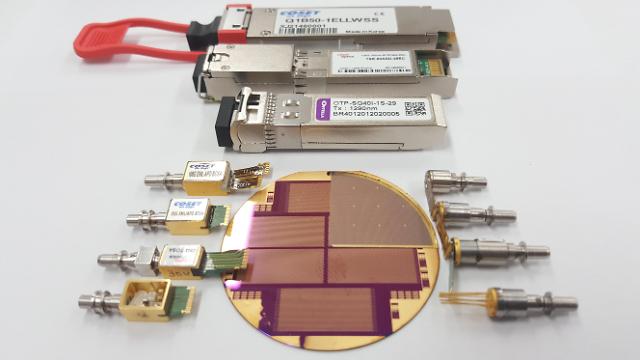
[Courtesy of ETRI]
SEOUL -- South Korea's state research institute worked with domestic communication technology companies to localize 31 kinds of core components that are used for the establishment of optical cable networks for 5G communication. Following the commercialization of homemade parts, the companies will target the global market, which is projected to reach $80.5 billion by 2028.
Although 5G communication systems are focused on establishing wireless connections between mobile devices and base stations, communication takes place mainly through land optical lines that connect base stations to telecom companies' optical cable relay centers and communication hubs. It is important to secure a fast data connection using optical cable networks to get fast 5G wireless data transfer speeds.
Currently, many 5G system-on-chips and communication platform software solutions are homemade but many companies depend on foreign products, especially those made in Japan, for light-receiving components, photocouplers, and photo transceivers.
The Electronics and Telecommunications Research Institute (ETRI) said that the institute collaborated with nine domestic communication technology companies including OE Solutions to develop 31 types of optical communication components. 21 products were commercialized. ETRI said that depending on the growth of the 5G market at home and abroad, localized parts can accumulate sales of about 100 billion won ($81.8 million) by 2025.
Optical components are specific parts used in the front-haul section of the 5G optical communication process. The front-haul process focuses on the transfer of data between 5G base stations and optical relay stations. The newly-developed 25-gigabits-per-second-class components are designed to replace the old 4G-based 10-gigabits-per-second-class photo components to boost data speed.
ETRI provided core technologies so that small-and-medium-sized enterprises (SMEs) can reduce costs for research and development. "To strengthen SME's competitiveness in the optical communication sector, it is vital for them to receive close technical support," ETRI researcher Lee Gil-haeng said in a statement on March 22.




